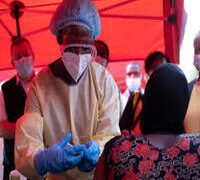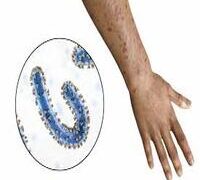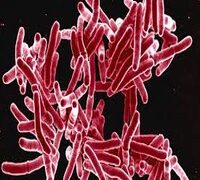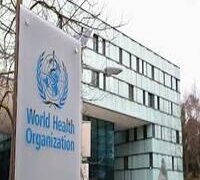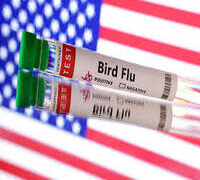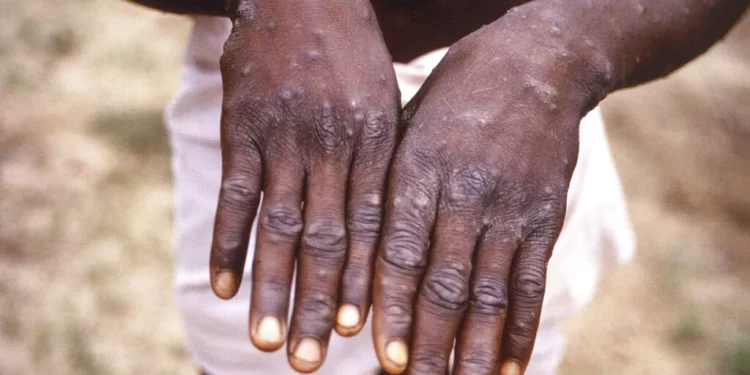PREVIEW
1. Monkeypox is an infectious disease
2. Monkeypox is caused by a virus
3. Monkeypox spreads through Contact/ droplets
4. Symptoms: fever/intense headache/swelling of the lymph node/back pain/rash
5. Monkeypox has no specific treatment
6. Complications of Monkeypox include bronchopneumonia, death etc.
7. Monkeypox is controllable.
Monkeypox (Mpox) infection is a zoonotic (affects animal and man) viral disease that occurs primarily in remote villages of Central and West Africa in proximity to tropical rainforests where there is more frequent contact with infected animals. In Africa, monkeypox infection has been found in many animal species: rope squirrels, tree squirrels, Gambian rats, striped mice, dormice and primates (chimpanzee, monkeys, gorilla, baboons).
Human monkeypox was first identified in humans in 1970 in the Democratic Republic of Congo (then known as Zaire) in a 9 year old boy in a region where smallpox had been eliminated in 1968. Since then, the majority of cases have been reported in rural, rainforest regions of the Congo Basin and western Africa, particularly in the Democratic Republic of Congo, where it is considered to be endemic. In 1996-97, a major outbreak occurred in the Democratic Republic of Congo.
In 2005, a monkeypox outbreak occurred in Sudan and sporadic cases have been reported from other parts of Africa. In 2009, an outreach campaign among refugees from the Democratic Republic of Congo into the Republic of Congo identified and confirmed two cases of monkeypox. Between August and October 2016, a monkeypox outbreak in the Central African Republic was contained with 26 cases and two deaths.
The disease is indigenous to Central and West Africa. An outbreak that occurred in the United States in 2003 was traced to a pet store where imported Gambian pouched rats were sold.
There has been astronomical increases in Mpox cases from 2022 to 2024. There was a spike of 79 percent from 2022 to 2023 and 160 percent from 2023 to 2024.
From January 2022 to July 2024, about 37583 new cases of Mpox were reported with 1,451 deaths. In 2023 alone 14,957 cases were reported with 739 deaths from seven countries, all in Africa.
Currently there is an outbreak of the disease in sub-Saharan Africa involving several countries particularly Nigeria and the Democratic Republic of Congo. Other countries affected include Kenya and Rwanda.
1. Monkeypox is an infectious disease
Monkeypox is an infectious disease caused by the monkeypox virus. The disease was first identified in laboratory monkeys in 1970, hence its name, but in its natural state it seems to infect rodents (rats, rabbits) more often than primates (chimpanzees, monkeys, gorillas, baboons).
2. Monkeypox is caused by a virus
Monkeypox is an infectious disease caused by the monkeypox virus.
3. Monkeypox spreads through Contact/ droplets
Monkeypox infection mainly affects animals: rodents (rats), particularly the Gambian rats; monkeys, squirrels and dogs but occasionally gets to rats. The African rat is the reserviour of infection.
The infection of the index case results from direct contact with the blood, body fluids, or cutaneous or mucosal lesions of infected animals.
Monkeypox is usually transmitted to humans from infected rodents, pets particularly dogs and primates through contact with the animal’s blood, secretions or through a bite.
Eating inadequately cooked meat of infected animals is another possible way of the spread of the disease to humans.
Secondary, or human-to-human, transmission can result from close contact with infected respiratory tract secretions, skin lesions of an infected person or objects recently contaminated by patient fluids or lesion materials. Transmission occurs primarily via droplet respiratory particles usually requiring prolonged face-to-face contact, which puts household members of active cases at greater risk of infection. Transmission can also occur by inoculation or via the placenta (congenital monkeypox). One can also contract the disease from sexual contact.
There is no evidence, to date, that person-to-person transmission alone can sustain monkeypox infections in the human population.
4. Signs and symptoms
The incubation period (interval from infection to onset of symptoms) of monkeypox is usually from 6 to 16 days with an average of 12 days.
The infection can be divided into two periods:
• the invasion period (0-5 days) characterized by fever, intense headache, lymphadenopathy (swelling of the lymph node), back pain, myalgia (muscle ache) and an intense asthenia (lack of energy);
• the skin eruption period (within 1-3 days after appearance of fever) where the various stages of the rash appear, often beginning on the face and then spreading elsewhere on the body. The face (in 95% of cases), and palms of the hands and soles of the feet (75%) are most affected.
5. Monkeypox has no specific treatment
Monkeypox can only be diagnosed definitively in the laboratory where the virus can be identified by a number of different tests:
There is no specific treatment available for monkeypox infection but certain antiviral drugs are effective against the disease.
6. Complications of Monkeypox include death etc
Complications of monkeypox infection include secondary bacterial infections, bronchopneumonia, pitted scars, deforming scars, blindness, brain infection and death. Death rate is between 3 and 11 percent.
7. Monkeypox infection is controllable
During human monkeypox outbreaks, close contact with other patients is the most significant risk factor for monkeypox virus infection.
One way to reduce infection in people is by raising awareness of the risk factors and educating people about the measures they can take to reduce exposure to the virus.
Two vaccines against Mpox are now available.
During an outbreak:
At individual level:
a. Close physical contact with monkeypox infected people should be avoided.
b. Gloves and protective equipment should be worn when taking care of ill people.
c. Regular hand washing should be carried out after caring for or visiting sick people as a way of life.
d. Cook all animal products (blood, meat) thoroughly before eating.
e. Gloves and other appropriate protective clothing should be worn while handling sick animals or their infected tissues, and during slaughtering procedures.
f. Health-care workers caring for patients with suspected or confirmed monkeypox virus infection, or handling specimens from them, should implement standard infection control precautions.
g. Healthcare workers and those treating or exposed to patients with monkeypox or their samples should consider being immunized against smallpox via their national health authorities.
h. Samples taken from people and animals with suspected monkeypox virus infection should be handled by trained staff working in suitably equipped laboratories with utmost care.
i. Small pox vaccination can reduce severity of infection if received within days of exposure; however, it is now rare since the eradication of small pox.
At community level:
a. Preventing monkeypox spread through restrictions on animal trade; restricting or banning the movement of small African mammals and monkeys may be effective in slowing the expansion of the virus outside Africa.Captive animals should not be inoculated against smallpox. Instead, potentially infected animals should be isolated from other animals and placed into immediate quarantine. Any animals that might have come into contact with an infected animal should be quarantined, handled with standard precautions and observed for monkeypox symptoms for 30 days.b. Mass vaccination.









